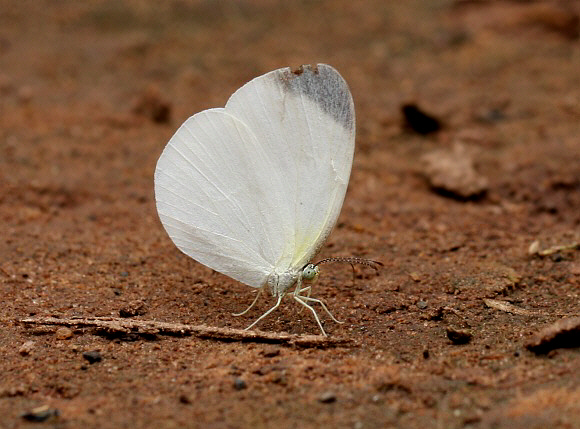
Introduction
The genus Eurema was until fairly recently represented in the neotropics by about 30 species, but several have now been reclassified as Pyrisitia, leaving a total of 19 currently recognised species in the neotropical region. Elsewhere in the world the genus has 9 species in Africa, 2 in Madagascar, and 9 in the Oriental and Australian regions.
These smallish butterflies are characterised by having yellow or white uppersides, with dark apical markings. The forewings have a strongly curved costa and in most species the apex is squarish. In the majority of species the hindwings are rounded, but some including salome, mexicana and arbela have the termen projected to a point.
Eurema lirina is similar in appearance to other white Eurema species but is smaller and daintier. The black markings on the upperside are confined to the apical area of the forewings. The underside of lirina is devoid of markings.
Eurema lirina is found in Brazil, Ecuador and Peru.
Habitats
This species is found in rainforest and deciduous forest at elevations between about 200-800m.
Lifecycle
To be completed.
Adult behaviour
Males are usually found singly, when imbibing dissolved minerals from damp ground at the edge of ditches, runnels or roadside banks in forested areas.
